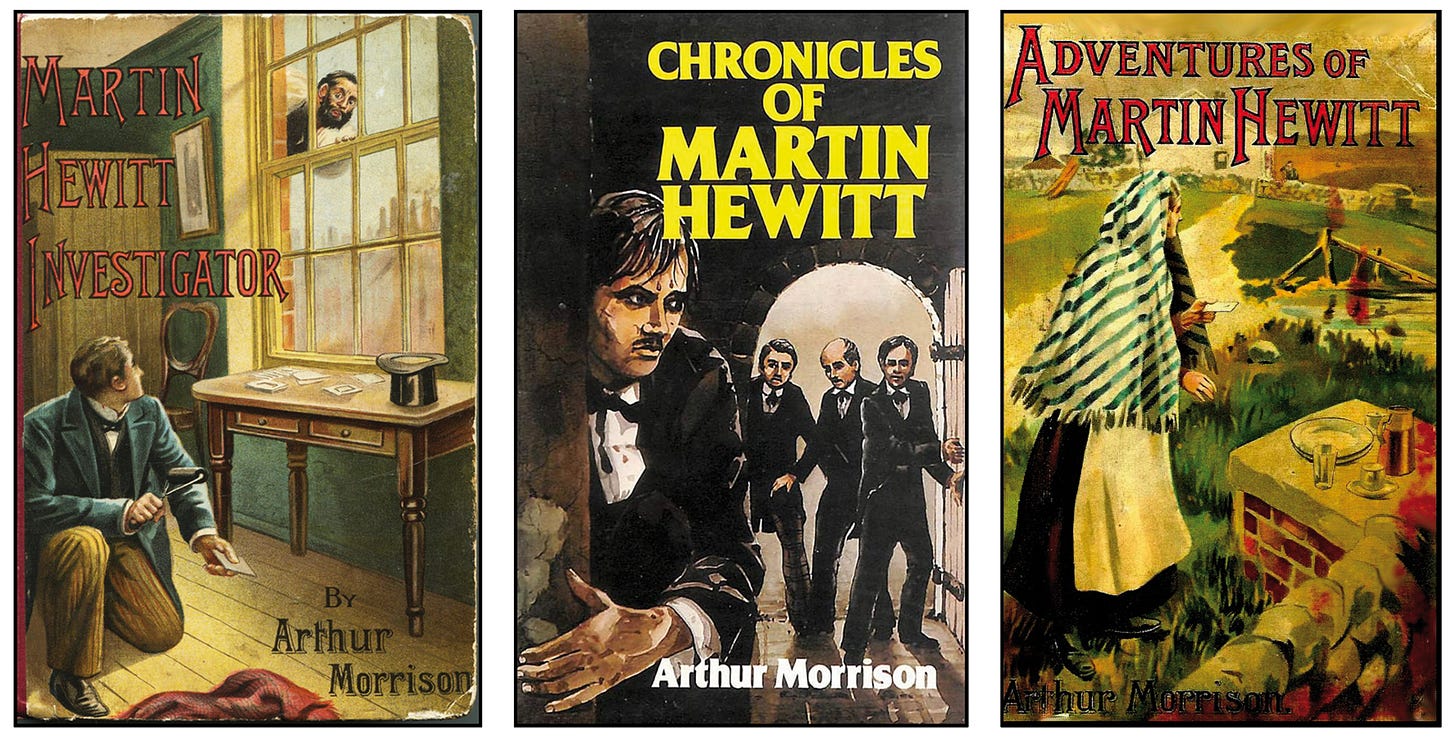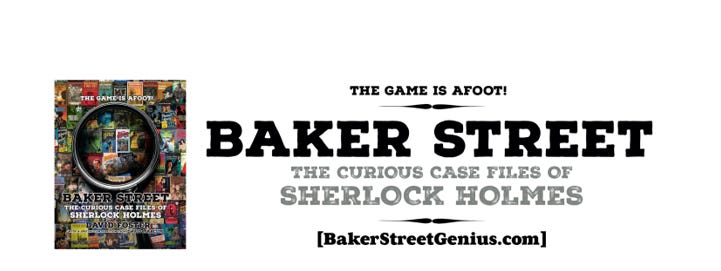In this fascinating guest article, David Foster dives into one of the most curious theories in Sherlockian scholarship: the idea that Martin Hewitt—Arthur Morrison’s clean-cut rival to Holmes—might actually be a young Mycroft Holmes in disguise.
Originally proposed in The Baker Street Journal in 1956, the theory still holds intrigue today. Read on to explore the surprising connections and decide for yourself.
The Man Who Would Be Mycroft
Martin Hewitt Investigates
THE WORLD OF Sherlock Holmes is full of conjecture, rumours, and fan theories. Some of them are more plausible than others. One of the more interesting one’s concerns Mycroft Holmes in the years before he formed the Diogenes Club and became a sedentary employee in the service of Her Majesty’s Government.
Arthur Morrison’s character Martin Hewitt appears regularly in numerous “Rivals of Sherlock Holmes” collections, but one theory suggests Hewitt is more than a mere rival—he is in fact Sherlock’s brother, Mycroft. It has been suggested the Martin Hewitt adventures are little more than thinly disguised memoirs of Mycroft’s younger years, when he was a private investigator.
The reasoning behind Martin Hewitt/Mycroft Holmes theory is explained in an article by J. Randolph Cox which appeared first in The Baker Street Journal (1956) and later in A Sherlock Holmes Compendium, by Peter Haining:
We all know he was seven years older than Sherlock, that he was far better of the two in the powers of observation, and that occasionally he was the British Government. Beyond this we know very little, except for a few statements about his physical appearance and his lack of ambition and energy.
But was he always lacking in ambition and energy? I think not...
... My theory is that he set himself up as a private consultant, much as his brother did. But where is the record of such a business? Or is there a record at all?
There is a record, but until now it has been thought by everyone to be fiction. The early cases of Mycroft Holmes are neatly filed away in four volumes which were published shortly after Watson began his biography of Sherlock. These early episodes were in the guise of a series of short stories about a former law clerk named Martin Hewitt.
I first suspected it when I noticed a slight resemblance between Sidney Paget’s drawing of Mycroft in The Strand and the Paget drawings in the Ward, Lock edition of Martin Hewitt Investigator.
Randolph Cox then goes on to examine the timelines of both Hewitt and Mycroft and finds that there’s no conflict and that it’s quite feasible that the two men are one and the same. And who are we to argue?
Regardless of if you accept Randolph Cox’s Martin Hewitt/Mycroft Holmes theory, there’s no doubt that the Hewitt stories are engaging mystery adventures and would be enjoyed by most fans of Sherlock and Mycroft Holmes.
The books in the Martin Hewitt series are Martin Hewitt Investigates (1894), The Chronicles of Martin Hewitt (1895), The Adventures of Martin Hewitt (1896) and The Red Triangle (1903).
Martin Hewitt was the invention of Arthur Morrison. Morrison (1863–1945) was an English author best known for his gritty depictions of London’s East End slums. He initially worked as a journalist before turning to fiction. His stories, especially those in Tales of Mean Streets (1894), are considered pioneering works in the genre of social realism, offering stark portrayals of poverty and urban life. Despite his popular success, Morrison moved away from writing fiction in his later years to focus on art collecting, eventually amassing a notable collection of Japanese art.
Beyond Martin Hewitt, Arthur Morrison also wrote seven short stories featuring another detective named Horace Dorrington. Dorrington also featured in several “Rivals of Sherlock Holmes” collections. He wasn’t as clean-cut as Mycroft or Sherlock Holmes. Wikipedia describes Dorrington as thus:
Unlike Martin Hewitt, Dorrington, as one critic put it, was a “low-key, realistic, lower-class answer to Sherlock Holmes”. He was noted as “a respected but deeply corrupt private detective,” “a cheerfully unrepentant sociopath who is willing to stoop to theft, blackmail, fraud or cold-blooded murder to make a dishonest penny.” The stories were collected in The Dorrington Deed-Box, also published in 1897.
Beyond Baker Street
I’ve always been fascinated by the shadow cast by Sherlock Holmes—a figure so iconic that his influence seeps into unexpected corners of pop culture. Beyond Baker Street is where I chase those echoes. Whether it’s a villain who once faced Holmes or a story that feels like it should’ve, this series lets me explore the strange tributaries that flow from the great detective’s world.
If you’ve enjoyed this piece, you’ll find even more to explore in my book Baker Street: The Curious Case Files of Sherlock Holmes—a deep dive into 100+ years of Sherlock Holmes in print, film, television, and beyond. From Conan Doyle’s original stories to pastiches, parodies, and pop culture echoes, it’s a must-read for Holmes fans and curious minds alike.
Yours in the Spirit of Adventure
David Foster is an Australian best-selling author who writes under the pen names James Hopwood, A.W. Hart, and Jack Tunney. Under the latter, he has contributed three titles to the popular Fight Card series. His short fiction has been published in over 50 publications worldwide, including by Clan Destine Press, Wolfpack Publishing, and Pro Se Productions, to name but a few. In 2015, he contributed to the multi-award-winning anthology Legends of New Pulp Fiction, published by Airship 27 Publishing.
Foster’s non-fiction work appeared in the award-winning Crime Factory Magazine, as well as contributing numerous articles exploring pulp fiction in popular culture to Girl Gangs, Biker Boys, and Real Cool Cats: Pulp Fiction and Youth Culture, 1950 to 1980 (2017, PM Press) and Sticking It to The Man: Revolution and Counterculture in Pulp and Popular Fiction, 1950 to 1980 (2019, PM Press). He has also contributed articles on the ANZAC war experience to Remembrance (2024, Union Street 21).
Foster lives in the old Pentridge Prison Complex, behind high grey stone walls, in inner-suburban Melbourne, Australia.
Baker Street (Full Color Paperback) by David James Foster





